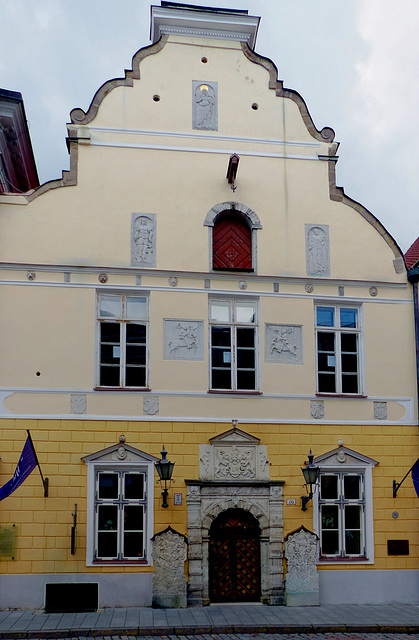Tallinn - Oleviste kirik
Tallinn - Suurgildi hoone
Tallinn - Suurgildi hoone
Tallinn - Suurgildi hoone
Tallinn - Toomkirik
Tallinn - Toomkirik
Tallinn - Toomkirik
Tallinn - Toomkirik
Tallinn - Aleksander Nevski katedraal
Tallinn - Aleksander Nevski katedraal
Tallinn - Kaarli kirik
Tallinn
Tallinn
Tallinn - Kumu
Tallinn - Kumu
Tallinn - Kumu
Tallinn - Kumu
Tallinn - Kumu
Tallinn - Kumu
Tallinn - Kumu
Haapsalu - Piiskopilinnus
Haapsalu - Toomkirik
Haapsalu - Toomkirik
Tallinn - Püha Vaimu kirik
Tallinn - Püha Vaimu kirik
Tallinn - Püha Vaimu kirik
Tallinn - Püha Vaimu kirik
Tallinn
Tallinn
Tallinn
Tallinn - Niguliste kirik
Tallinn - Niguliste kirik
Tallinn - Niguliste kirik (PiP)
Tallinn - Niguliste kirik
Tallinn - Niguliste kirik
Tallinn - Niguliste kirik
Tallinn - Niguliste kirik
Tallinn - Niguliste kirik
Tallinn - Niguliste kirik
Tallinn - Niguliste kirik
Tallinn - Niguliste kirik
Tallinn - Niguliste kirik
Tallinn - Art Nouveau
Tallinn - Art Nouveau
Tallinn
Location
See also...
Keywords
Authorizations, license
-
Visible by: Everyone -
All rights reserved
-
41 visits
Tallinn - Schwarzhäupterhaus


Tallinn, the capital city of Estonia, is situated on the shore of the Gulf of Finland of the Baltic Sea. It is only 80 kilometres south of Helsinki. From the 13th century until the first half of the 20th century Tallinn was known as Reval.
The first recorded claim over the place was laid by Denmark after a raid in 1219 led by Valdemar II. In 1227, the Order of the Brothers of the Sword conquered Reval and three years later recruited 200 Westphalian and Lower Saxon merchants from Gotland, who settled below the castle and were granted freedom of customs and land. In 1238 Reval fell back to Denmark, Under renewed Danish rule, the city rapidly grew in size and economic importance. In 1248, the Danish king granted it the Lübische Stadtrecht (town charter). Due to the strategic location, its port became a significant trade hub, especially in the 14–16th centuries when Tallinn grew in importance as the northernmost member city of the Hanseatic League.
The king of Denmark sold Reval along with other land possessions in northern Estonia to the Teutonic Knights in 1346.
The Schwazhäupterhaus is the former headquarter of the Brotherhood of Blackheads (Brüderschaft der Schwarzhäupter). The brotherhood had come into being in 1399, when the unmarried members left the Great Guild, which was made up of merchants. After marrying, the Blackheads then became members of the Great Guild. Later, foreign merchants staying in Reval also belonged to the Blackheads. The name was derived from the patron saint of the brotherhood, Saint Mauritius, who was depicted as a Moor.
The building was acquired by this organization in 1517. The façade was rebuilt in the style of Renaissance architecture from the Low Countries. A Maure, symbol of Saint Mauritius, appears both carved in wood and sculpted in stone above the door.
The first recorded claim over the place was laid by Denmark after a raid in 1219 led by Valdemar II. In 1227, the Order of the Brothers of the Sword conquered Reval and three years later recruited 200 Westphalian and Lower Saxon merchants from Gotland, who settled below the castle and were granted freedom of customs and land. In 1238 Reval fell back to Denmark, Under renewed Danish rule, the city rapidly grew in size and economic importance. In 1248, the Danish king granted it the Lübische Stadtrecht (town charter). Due to the strategic location, its port became a significant trade hub, especially in the 14–16th centuries when Tallinn grew in importance as the northernmost member city of the Hanseatic League.
The king of Denmark sold Reval along with other land possessions in northern Estonia to the Teutonic Knights in 1346.
The Schwazhäupterhaus is the former headquarter of the Brotherhood of Blackheads (Brüderschaft der Schwarzhäupter). The brotherhood had come into being in 1399, when the unmarried members left the Great Guild, which was made up of merchants. After marrying, the Blackheads then became members of the Great Guild. Later, foreign merchants staying in Reval also belonged to the Blackheads. The name was derived from the patron saint of the brotherhood, Saint Mauritius, who was depicted as a Moor.
The building was acquired by this organization in 1517. The façade was rebuilt in the style of Renaissance architecture from the Low Countries. A Maure, symbol of Saint Mauritius, appears both carved in wood and sculpted in stone above the door.
Paolo Tanino has particularly liked this photo
- Keyboard shortcuts:
Jump to top
RSS feed- Latest comments - Subscribe to the comment feeds of this photo
- ipernity © 2007-2024
- Help & Contact
|
Club news
|
About ipernity
|
History |
ipernity Club & Prices |
Guide of good conduct
Donate | Group guidelines | Privacy policy | Terms of use | Statutes | In memoria -
Facebook
Twitter

www.ipernity.com/group/buildings
Club members please read this (URGENT)
www.ipernity.com/blog/team/4737428
Sign-in to write a comment.